The sharing of knowledge through storytelling.
There is a story for nearly everything we encounter–the salmon migration journey, the changing of seasons, the naming of places and of landscapes, the family traditions steeped in culture–and this sharing helps shape our understanding of place. Storytelling is how we communicate knowledge and pass it down from generation to generation. It’s how we experience and learn about the world around us.
Think of a story you remember.
Who told you the story? What do you remember about the story? Where were you when you heard the story? Have you shared the story with anyone else?
Storytelling blends imagination, creativity, culture, and is the oldest form of education. Think about sitting around a fire and listening to tales. Or making a family recipe in the kitchen with your parent or sibling. Or going reefnet fishing with an elder.
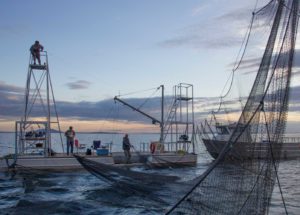
I remember sitting at the long table under the cool, covered patio listening to my grandfather tell stories as he sat at the head of the table. The smell of coffee lingered in the air. It was summer and my parents, along with myself and brother packed suitcases and flew in a plane across the country to California to visit family for a week as we did most summers when I was growing up. We sat, in thinly cushioned folding chairs at this table for hours and hours. We ate steaming plates of rice pilaf, dolmas, shish kabob, and the always present Armenian flatbread. Never did I experience a shortage of food at my grandparent’s house. Story after story tumbled from my gray-haired, hard-working, gentle grandfather gesturing wildly with his hands. The walls of the indoor patio were lined with photos of the family. My cousins, second cousins, third cousins, aunties who weren’t blood relatives but were welcomed into the family, uncles, great grandparents, and great-great-grandparents from the old country were framed in small circles, boxed squares, wooden frames, ornate frames hung frozen in time on the long wall. It felt like they were sitting at the table with us. This is where and how I first learned about the paternal side of my family.
Indigenous Storytelling Traditions
Story is the most basic form of communication and it’s been around as long as humans have existed. Native Americans have strong storytelling traditions that are intimately tied to culture, language, and place. This sharing of knowledge passed down from generation to generation serves as a guide in cultivating a respectful relationship with the land and all that lives on the land. Traditional stories help to continue cultural practices, revitalize the language of tribes, and pass along practical wisdom.
Roger Fernandes, of the Lower Elwha S’Klallam Tribe, is a Native educator, storyteller, and artist who shares myths and legends of the Coast Salish people. He shares his wealth of knowledge with Native and non-Native people in this area and he brings alive that which we might fail to notice or think about. Watch this short video of Roger Fernandes telling the ancient Duwamish Myth of the Changer, the Transformer.
Coast Salish tribes have existed in this region for over 10,000 years living off the land in ways that replenish and give back the earth. Salish people harvest foods with the understanding that not taking too much ensures food for future generations. Stories remind the younger generations of how to respect and build relationships with the earth that allowed people to flourish for thousands of years. Traditional ecological knowledge builds an understanding of the importance of our connection to that which sustains us.
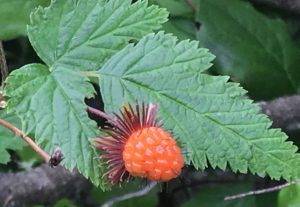
Do you know when salmonberries ripen? When you hear the singing of Swainson’s thrush, the berries are nearly ripe for picking. What about the best time to harvest butter clams? When the Oceanspray (or Ironwood) bushes are in full bloom. This ecological wisdom is shared through storytelling and by sharing the experience of harvesting, fishing, drying, preparing, praying, and giving thanks.
Every place upon which people live was once the homeland of Indigenous people. Whose land are you on? Do you know the name of the tribe or tribes whose traditional territories you are on?
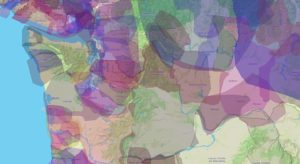
Whose land are you on?
Check out the interactive version of the tribal territories map to learn about the tribes in your area!
- Once on the page, zoom in or out or simply type your location in the top left-hand corner. The above image is Washington state.
- You can also use the tool to find the language spoken in a location.
So whose land are we on in Bellingham?
The traditional lands of the Lummi and Nooksack tribes.
In Lynden?
The traditional lands of the Nooksack tribe.
In Blaine?
The traditional lands of the Semiahmoo.
Tribes have their own stories, much the same way each of our families has our own stories. The Lummi or Lhaq’temish call themselves “salmon people” and “people of the sea” and have been thriving here for 10,000 years, at least until the European settlers arrived. Much of their culture and livelihood depend on the health of the salmon and water, the importance of which is shared through story.
Listen (or read if you only have a few minutes) to KUOW’s The Wild podcast featuring Lisa Wilson and Darrell Hillaire of the Lummi Nation. Hear a creation story and how a grandfather’s wishes are being carried out.
So when thinking about the best ways to move forward in caring for our community–all the beings that form the community–let’s remember the stories of place that have guided people since time immemorial. Bring your own stories and share your own wisdom so we can all create systems that help us adapt to changes in healthy ways for all beings.
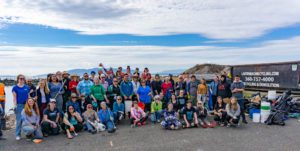
Take Action
Write your own story!
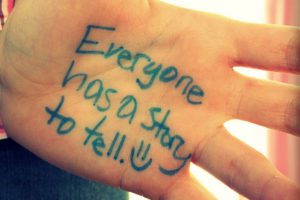
Now that you’ve learned about the importance of storytelling, it’s time to create your own story! When you’re done, share it with us or tag us on Instagram (@resources_protects)!
Continue Learning!
There are lots of topics for you to choose from. Don’t stop here; move on to discover another lesson! New lessons uploaded each week.
Photo credits: (top) Leah Dorion’s piece “Land of Tamarach and Spruce.”
